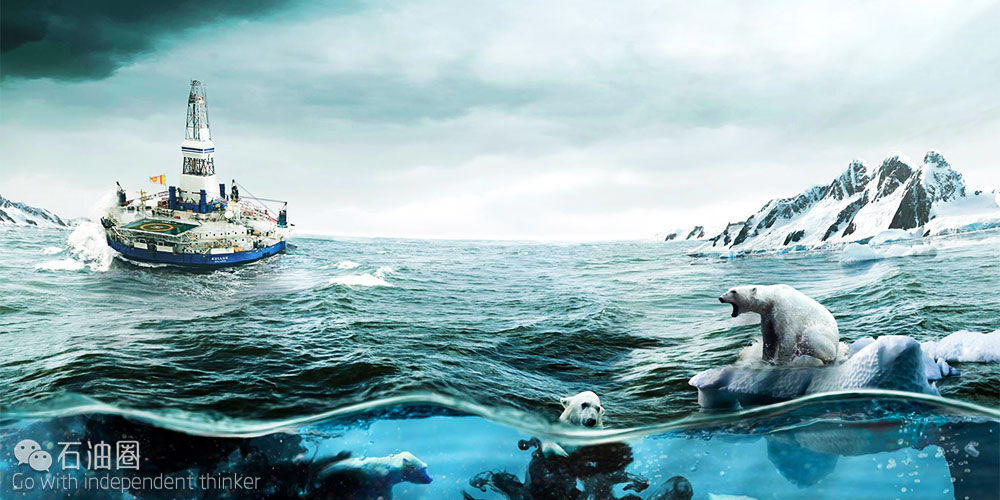
冰山耸立,积雪皑皑,气候严寒,人口稀少。这或许是北极留给大多数人的印象。事实上,北极地区拥有900亿桶的石油储量,1669万亿立方英尺的天然气,440亿桶的液态天然气,84%的这些资源位于离岸地区,但开采成本高昂。美国、加拿大、俄罗斯等多个国家对北极地区虎视眈眈,纷纷出台北极战略,甚至主张用军事手段捍卫各自在北极的利益。北极这一能源聚宝盆,不容小觑。
几个世纪以来,北极圈一直充满吸引力。石油圈原创www.oilsns.com
数百年前,欧洲人发现北极的寒冷水域是太平洋的一个潜在入口。同时,这个地区也是许多特有文化的发源地,比如爱斯基摩文化和楚科奇文化。不用多说,北极地区有许多迷人的自然风光,许多热爱自然的人们也被这片不曾被外界涉足的自然栖息地的美景所震撼。
然而,北极同样也是最后一个发现自然资源的地方,在冻土和冰层下面蕴藏着储量极大、至今仍未被发现的石油、天然气和矿产资源。这也是为什么美国、挪威、俄罗斯、丹麦和加拿大对北极地区领土争执不休的原因。
以下这张图表简单明了的解释了全球油气和矿产资源储量与北极区储量的相互关系,有助于我们理解这些未开发资源的潜在价值。石油圈原创www.oilsns.com

就石油而言,据估计北极圈未发现储量可达900亿桶。这相当于目前全球已探明储量的5.9%,是俄罗斯目前已探明石油储量的110%,或是美国石油储量的339%。
而对于天然气,勘探潜力巨大。据估计北极区有1669万亿立方英尺天然气,相当于目前全球已探明储量的24.3%。是美国储量的500%,俄罗斯储量的99%,也是加拿大天然气储量的2736%。
大约84%的烃类资源都可能埋藏于海底。石油圈原创www.oilsns.com
当然,在北极区还发现了大量的金属矿产,包括黄金、钻石、铜、铁、锌和铀。然而,想要把它们开采出来并非易事。在北极区开采矿产可是一件高成本的投资:通航时间短、融化永冻层困难、沼泽夏季、北极熊以及-50℃的恶劣气候都使得勘探开发成本变得非常高昂。
作者/Jeff Desjardins 译者/布玲 编辑/Wang Yue
The Arctic has been the fascination of many people for centuries.
Hundreds of years ago, the Europeans saw the Arctic’s frigid waters as a potential gateway to the Pacific. The region has also been home to many unique native cultures such as the Inuits and Chukchi. Lastly, it goes without saying that the Arctic is unsurpassed in many aspects of its natural beauty, and lovers of the environment are struck by the region’s millions of acres of untouched land and natural habitats.
However, the Arctic is also one of the last frontiers of natural resource discovery, and underneath the tundra and ice are vast amounts of undiscovered oil, natural gas, and minerals. That’s why there is a high-stakes race for Arctic domination between countries such as the United States, Norway, Russia, Denmark, and Canada.
Today’s infographic highlights the size of some of these resources in relation to global reserves to help create context around the potential significance of this untapped wealth.
In terms of oil, it’s estimated that the Arctic has 90 billion barrels of oil that is yet to be discovered. That’s equal to 5.9% of the world’s known oil reserves – about 110% of Russia’s current oil reserves, or 339% of U.S. reserves.
For natural gas, the potential is even higher: the Arctic has an estimated 1,669 trillion cubic feet of gas, equal to 24.3% of the world’s current known reserves. That’s equal to 500% of U.S. reserves, 99% of Russia’s reserves, or 2,736% of Canada’s natural gas reserves.
Most of these hydrocarbon resources, about 84%, are expected to lay offshore.
There are also troves of metals and minerals, including gold, diamonds, copper, iron, zinc, and uranium. However, these are not easy to get at. Starting a mine in the Arctic can be an iceberg of costs: short shipping seasons, melting permafrost, summer swamps, polar bears, and -50 degree temperatures make the Arctic tough to be economic.
未经允许,不得转载本站任何文章:
-

- 甲基橙
-
石油圈认证作者
- 毕业于中国石油大学(华东),化学工程与技术专业,长期聚焦国内外油气行业最新最有价值的行业动态,具有数十万字行业观察编译经验,如需获取油气行业分析相关资料,请联系甲基橙(QQ:1085652456;微信18202257875)




 石油圈
石油圈